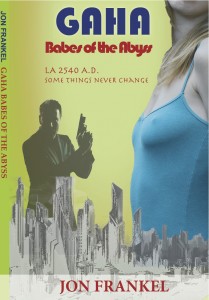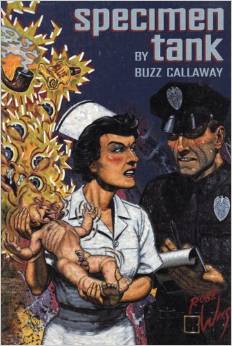Jim Krusoe: Girl Factory
Jim Krusoe’s first novel Iceland was a devastating nightmare told in a beguiling and simple prose that promises, at the outset, to be an ironic, poppy story of obsession. It begins when the hapless hero discovers a beautiful woman swimming naked in a pool. They have sex of course, but the whole scene is rendered in such detail and color that despite any resistance, I at least shared the protagonist’s agony when the woman disappears. He spends the rest of the book searching for her, and his search does indeed lead him to an ice cave in Iceland. There is nothing in its beginning to hint at its conclusion. Each turn in the search ratchets up the frustration. The balance between the creeping sinister under current and chatty surface of his prose is maintained up until the final scene, when death engulfs all that has preceded. Iceland was perfect book.
Not so Girl Factory, though it is an enjoyable entertainment. Girl Factory begins when Jonathan, another hapless hero, frees a vicious, chess playing dog from the pound. He has mistaken it for a super dog he has read about in the paper and the animal immediately murders a child and escapes. This is just the first of several inadvertent murders. In this it resembles typical noir, though there is nothing hardboiled about Krusoe’s writing.
Jonathan works at a frozen yogurt shop in a strip mall, Mister Twisty. He is a directionless, vapid loser, a wounded romantic living in an apartment complex. Shortly after the botched dog rescue he discovers that his boss, Spinner, has a secret: in the basement of the store are women, preserved in glass tanks of acidophilus:
“…a tall cylinder with a sort of burnished metal cap and a shiny metal base, out of which stuck four silver fins, strangely like those of the V-2 rockets that fell on London in newsreels from the Second World War. Or, to use a more modern analogy, it resembled a seven-foot-tall version of one of those fancy Italian espresso boilers you sometimes see in trendy coffee bars, hissing and wheezing out phlegmy portions of java. Between the base and the cap were six feet of cloudy glass, or possibly Plexiglas…
“….there was a flicker behind the glass, and slowly the faint glow brightened to reveal the form of a young and actual and completely naked woman.
“The woman was blonde and somewhere in her twenties, I guessed, her pale hair floating like strands of egg whites in the mysterious fluid that surrounded her, her blue eyes open wide and slightly crossed, her nose straight and thin, her breasts white and symmetrical, her knees knocked, her feet slender, with bluish veins running along their tops down to her toes like mountain streams pouring out of a glacier.â€
One of them resembles Jonathan’s first girlfriend. He becomes obsessed with these women, and when Spinner is murdered by assassins, and his widow Gertrude hands the operation over to Jonathan (so she can grieve with her new support group, Spouses Without Spouses), he sets about trying to revive them. It doesn’t go well. The spiral heads down.
Krusoe is a comic writer. His books are experimental in the sense that they tug and play with conventional narrative, and at no time is the mystery serious, at least, the ostensible mystery of the plot. Again, as with Iceland, there is a sinister undercurrent. The deaths are real, and feel real. But the details of plot and character, the locale, the various shop owners, friends, neighbors that inhabit these books are loving parodies. Krusoe’s knives are not deployed against the novel, but against the illusions of certainty obsession brings to life. He plays with fictional convention like a cat with string. Jonathan has a neighbor, an old man, who pointlessly waters the bushes and lawn outside of the apartment complex. Jonathan on two occasions has extended conversations with him before going to work. For some reason, despite the fact that the hose and water are soaking his shoes, socks and feet, he cannot move but must recall, in some detail, his two disastrous relationships with women. Krusoe airs the device, points to it, laughs at it, but uses it. He can’t indulge this little piece of novelistic stage business without comment, but he is not hostile to it, he has no narrative ax to grind. Krusoe is a poet, so I assume some of this is the poet’s exasperation with the minimal demands of narrative structure. He is saying, ‘All right, I’ll do this, even though it’s stupid,’ but it is not a tedious, or tendentious and immature stance.
What is missing from Girl Factory in the end is the depth and despair of Iceland. Maybe if I didn’t expect this of Girl Factory I’d be a little more enthusiastic. But every novel doesn’t have to be an unanticipated journey into hell. Girl Factory is certainly an unresolved mystery, with hellish dimensions. It is an intelligent, entertaining tale told by an unreliable idiot. Its pleasures though are not those of sneering at the idiot, but rather of identity. Jonathan is, in his limited way, trying to engage his own shallowness, but can find no purchase around him to do so. Perspective in this case is impossible, as all the other characters are shallow idiots as well, and of course, they live in the capital of shallow idiocy, which would be California, USA.



